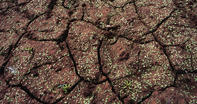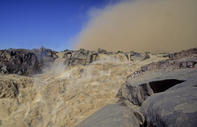Observed Changes
Greenhouse gas concentrations are up, and they’re clearly dragging the temperature up with them. Across the vast expanse of our biosphere, that thin epidermis in which life is found, nature is now giving us clues that it is responding to our atmospheric pollution.

The following list of observed changes are from the Intergovernmental Panel on Climate Change (IPCC) Working Group 1’s Summary for Policymakers. In response to rising temperatures: A warmer atmosphere can hold more water vapour, and since the 1980s the average atmospheric water vapour content has increased.
Between 1961 and 2003, sea levels rose between 1.3 mm and 2.3 mm per year – but this is speeding up, with more recent rates averaging at 3.1 mm annually. This happens for two reasons: a) the physical swelling of a warmer ocean pushes up the sea level, causing tide lines to reach higher up the coastline; and b) melting of snow cover, glaciers, and the Greenland and Antarctic ice sheets adds more water to the ocean.
Arctic sea ice has shrunk by a steady 2,7 percent per decade since 1978 Permafrost in the high latitudes of the Northern Hemisphere has shrunk by 7 percent since 1900. Northern Europe, northern and central Asia and eastern parts of North and South America have seen increased precipitation while southern Africa, parts of southern Asia, the Sahel and the Mediterranean have been getting drier.
Long-term trends, however, remain elusive. Another canary in the mine, as an indicator of change, is rising salinity around equatorial oceans. This suggests more evaporation in these latitudes, while “freshening” of waters closer to the poles suggests more precipitation is falling over the oceans in these parts.
Extreme Weather

Rising temperatures amplify naturally occurring weather events, increasing the frequency and intensity with which extreme events occur. Drought: since the 1970s, droughts have become “more intense and longer… particularly in the tropics and subtropics”.
This drying, says the IPCC, is linked to “higher temperatures and decreased precipitation”, while “changes in sea surface temperatures, wind patterns and decreased snowpack and snow cover” also contribute to drought. Intense rain and snow: in a warmer world, more evaporation occurs and the atmosphere can hold a bit more water vapour.
The result is an increase in the frequency of heavy rain or snow events. This is already being observed. Storms: hotter seas are driving faster and more intense tropical storms, although there doesn’t appear to be an increase in the number of such storms. More hot weather: we’ve seen fewer cold snaps (days and nights) and frost events but more hot spells and heat waves, with an increasing tendency towards temperature extremes.
By Leonie Joubert